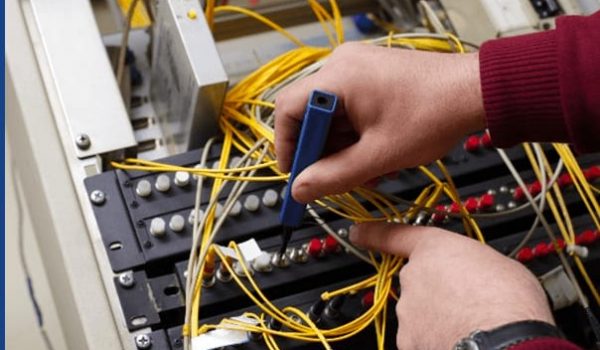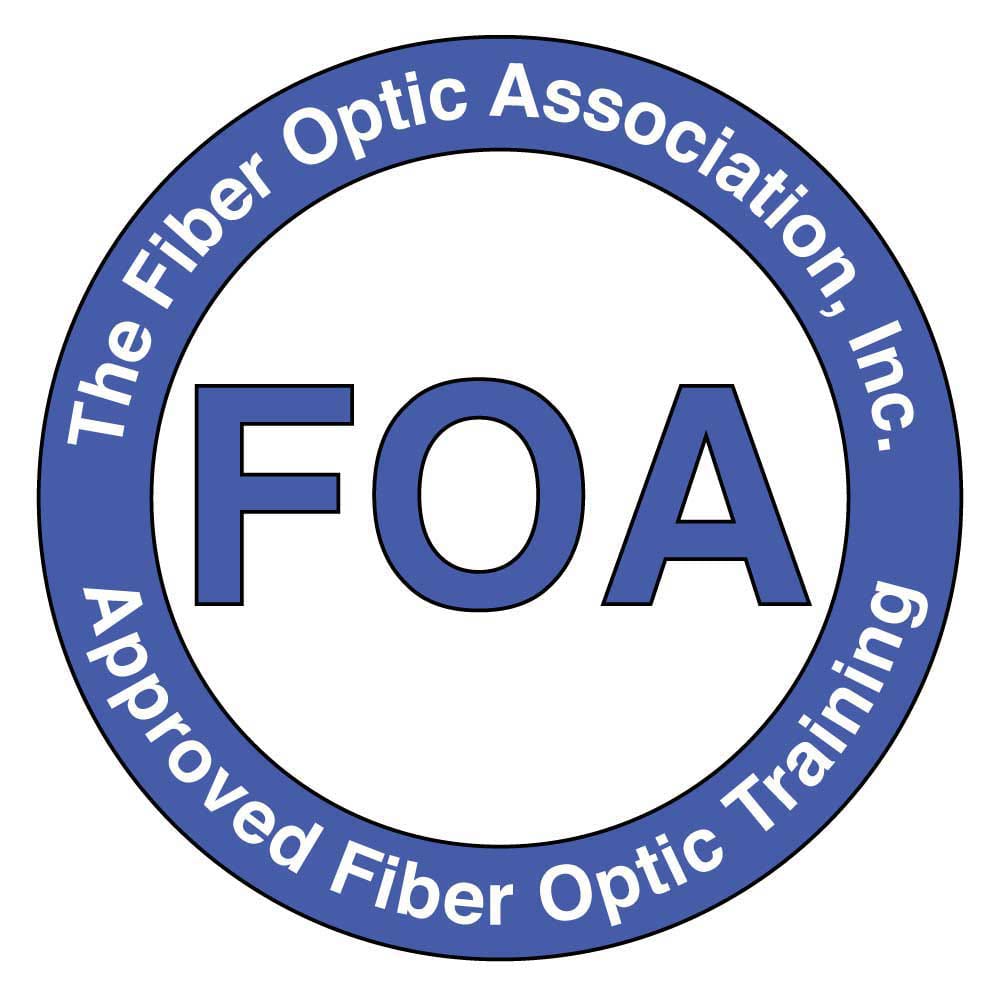CFOT : Certified Fiber Optic Technician
This accredited and certified Fiber Optics course is designed for anyone interested in becoming an engineer in Fiber Optic technology with the ability to handle the various technical areas of installation leading to the award of CFOT from FOA. This program combines both theory and practical exercises with the use of relevant software in designing proposed fiber route and implementation. The skill to be acquired in this course centered on: Installation, Termination, Splicing, and Testing & Documentation among other skills
Course preview:

The skill to be acquired in this course centered on: Installation, Termination, Splicing, and Testing & Documentation among other skills
Course Overview
Course Description
This accredited and certified Fiber Optics course is designed for anyone interested in becoming an engineer in Fiber Optic technology with the ability to handle the various technical areas of installation leading to the award of CFOT from FOA. This program combines both theory and practical exercises with the use of relevant software in designing proposed fiber route and implementation. The skill to be acquired in this course centered on: Installation, Termination, Splicing, and Testing & Documentation among other skills
Course Prerequisite
The course can be taken by a new student to the skills of computer networking & engineering. It is ideal for anyone who is to be employed as Fiber Optic system analysts & also telecommunication professionals.
Course Content
- Brief history
- Definition of Advantage of fiber optics transmission over copper, coaxial and radio frequency.
- Preparation/manufacturing of fiber optics cables.
- Health and safety execution (HSE) under TIA/EIA regulation.
- Warning signs
- Safety equipment
- Electrical safety
- Confined spaces
- Core, cladding, buffer coating or primary coating and Strength members.
- Reflection, Refraction and Refractive index.
- Critical angle and total internal reflection
- Fiber types: All plastic (P.C.S. and H.C.S. All glass (Step index MM, Graded index MM and Single mode)
- Numerical aperture(NA)/ Acceptance Cone
- Mode Field Diameter MDF: Defines the size of power distribution through the core /Cladding of the fiber.
- Definition of what a fiber optic network is.
- Transmitters/Light sources ( LEDs, VCSELs & LASER)
- Optical fiber parameters Wavelength Frequency WDM
- Fiber optics amplifiers EDFAs (erbium doped fiber amplifiers) Raman amplification
- Windows/operating wavelength
- Cable types
- TIGHT BUFFERS : Distribution cables, Breakout cables
- LOOSE TUBES :Ribbon cables, Armored, OPGW cables
- Hybrid and Composite cables
- Cable selection specification
- Installation Specifications
- Environmental Specification
- Cable Rating
- Plenum Area
- Risers
- General Purpose
- Connector Types
- ST Connectors
- LC Connectors
- FC/RC Connectors
- SC Connectors
- MT/RJ
- Termination Procedures
- Adhesive Termination Epoxy/polish, Hot-Melt, Anaerobic Adhesives, Acrylic
- Crimp/polish
- Prepolished splice
- Polishing Techniques
- The Flat Finish, Physical Contact (PC),Angled Physical Contact (APC)
- Definition
- Types: Mechanical/Fusion
- Choosing a splice type
- Step by step splicing Process
- Splice Losses; Cause and Remedies
- Definition
- Types/kinds of losses in fiber optics links
- Attenuation (Rayleigh scattering, Absorption and leakages)
- Dispersion (modal, chromatic and PMD) Loss budget in a fiber optic link.
- TIA/EIA Standard
- Installation processes
- TIE/EIA Standard
- Splice organizers and splice trays
- Splice enclosures
- Racks and cabinets
- Visual fault tracing
- Visual fault locator
- Visual connector inspection
- Optical time-domain reflectometer (OTDR)
- OTDR limitations
- Optical power loss(absolute and relative test)
- Measuring Power
- Testing Loss (single ended loss and double ended loss)
